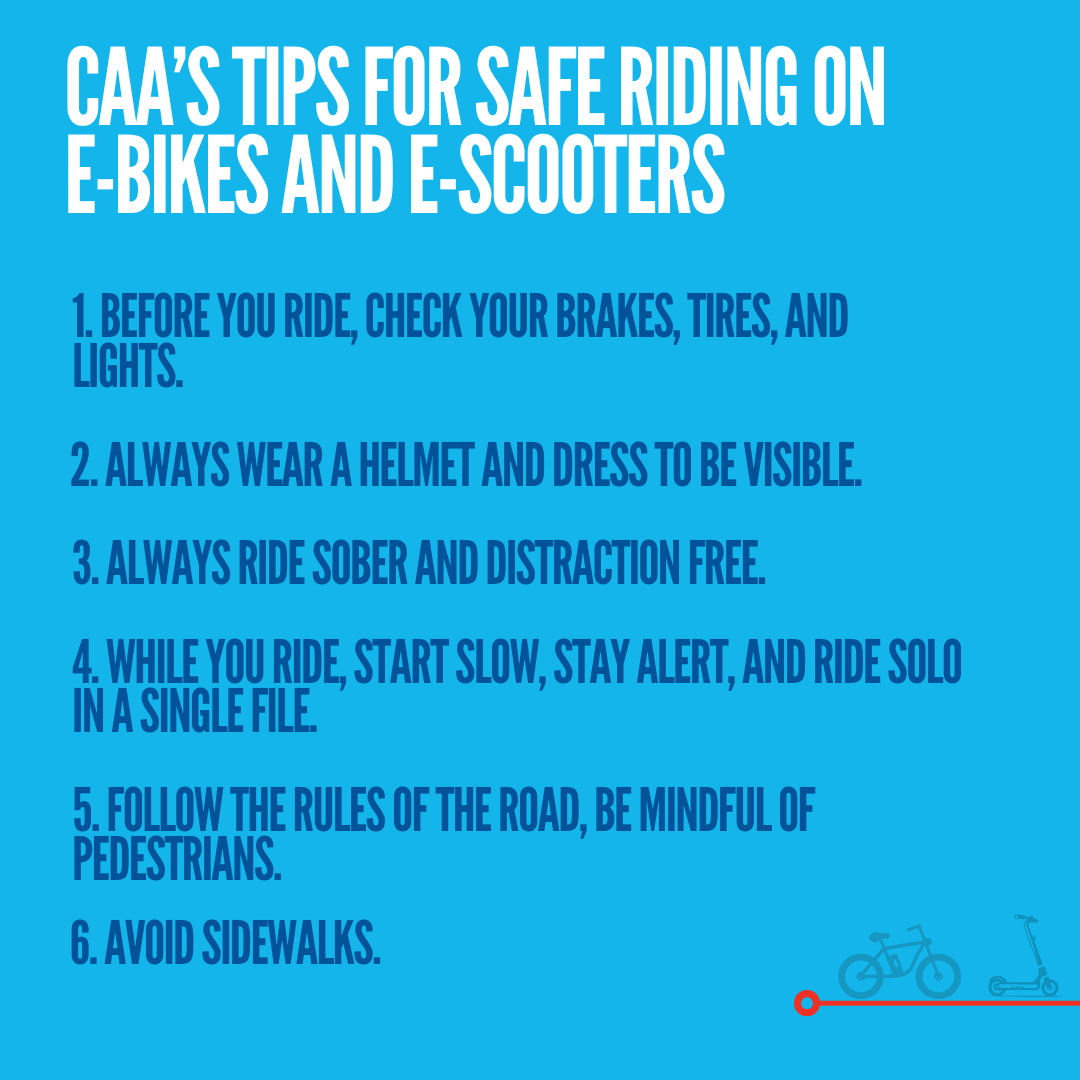Road safety laws lag adoption of personal e-bikes and e-scooters, CAA study finds
As sales of electric bikes and scooters rise across Canada, a new study released by CAA reveals gaps in safety regulations, data collection, and public awareness. Read the full news release and learn more about the study.
Cyclists and pedestrians in daily danger at intersections, CAA study finds
In the largest Canadian study of its kind, over 600,000 near misses were recorded across just 20 intersections over seven months. Actual collisions are recorded by police, but not the near misses that come become tragic. Read the full news release and learn more about the study.

Pedestrians
As parents and caregivers, it’s important to teach children about pedestrian safety. Always lead by example. Before you go out walking review some of the pedestrian safety tips that CAA has to offer.
- Be alert and aware of your surroundings.
- Stop, look both ways, listen and think before safely crossing the street.
- Wear reflective clothing or carry a flashlight when walking during harsh weather or low light conditions.
- Ensure all vehicles come to a complete stop and make eye contact with motorist before crossing the street – never assume that drivers can see you or know your intentions.
- Never run out in traffic or between parked cars, buses, or buildings.
- Parents, caregivers, or older children should hold hands with younger children when crossing the street.
- Follow traffic signs and signals. Only cross at designated locations or crosswalks. Do not jaywalk.
- Eliminate distractions such as using your mobile devices for texting, listening to music, social media, or gaming.
- Avoid wearing headphones or anything that can obstruct your vision or hearing.
- At a traffic light, start crossing when the walk light first starts flashing. Do not cross when the final countdown is on signaling the light will change as you will not have enough time to cross the street safely.
- Allow for extra time to cross the street safely with older adults, individuals with mobility issues and younger children.
- Wear reflective clothing or accessories at night to make yourself more visible.
- Dress appropriately for the weather especially if you are going on a long walk. The conditions can change quickly.
- Older adults, don’t risk a slip and fall! Learn more about fall prevention and check out the Saskatchewan Safety Council’s at-home fall prevention checklist.
Walking your kids to school
Walking to and from school is an active way for children to get their exercise while enjoying the outdoors. Kids who walk build independence and social skills and they move more than kids who are less active. When they walk to school, they arrive energized and ready to learn.
- Electronics devices and gadgets can be distracting. Put them in backpacks or leave them at home.
- Plan a walking route to school with your kids. Parents and caregivers, be sure to point out crosswalks, stop signs, and family or friends’ homes.
- Be alert when walking and crossing the street.
- Teach children about the safety rules of the road – always stop, look both ways, listen and think before safely crossing the street.
Learn more about school zone safety advice here.
Drivers and cyclists
- Always look for pedestrians crossing the road at intersections.
- Drivers and cyclists must yield to the right of way to pedestrians crossing the street.
- Drivers and cyclists should learn how to share the road safely. Learn more
- Watch for children who may dart out in traffic.
- Be aware of blind spots when making your turns at intersections.
- Avoid distractions inside and outside of your vehicle.
- Watch your speed in school zones and residential areas and be prepared for the unexpected.
- In colder temperatures, the exhaust from an idling vehicle, as well as tall snowbanks, could obscure a driver’s vision. Pay extra attention in school zones and near parks and playgrounds.
- Be cautious around stopped transit vehicles and be courteous to vulnerable pedestrians.
- Communication (eye contact, indicate turns, etc.) between all road users is important to keep everyone safe.
- Give young children extra time to cross the street safely. According to Saskatchewan Prevention Institute, young children are not capable of understanding the dangers and do not develop the skills necessary for crossing a street safely until they are at least nine years of age. Learn more about child development and pedestrian safety here.
- Allow extra time for seniors to cross streets safely. Older pedestrians are more fragile, and experience declines in mobility that result in a slower walking pace or the need for walking aids or mobility devices. The Saskatchewan Safety Council has an informative video with some fall prevention advice, plus a home fall prevention checklist.
Learn more about Driver Safety here.
CAA Saskatchewan is a dedicated safety advocate for motorists, travellers, and pedestrians. We work with community partners, local and provincial governments to help make conditions safer for all road users.